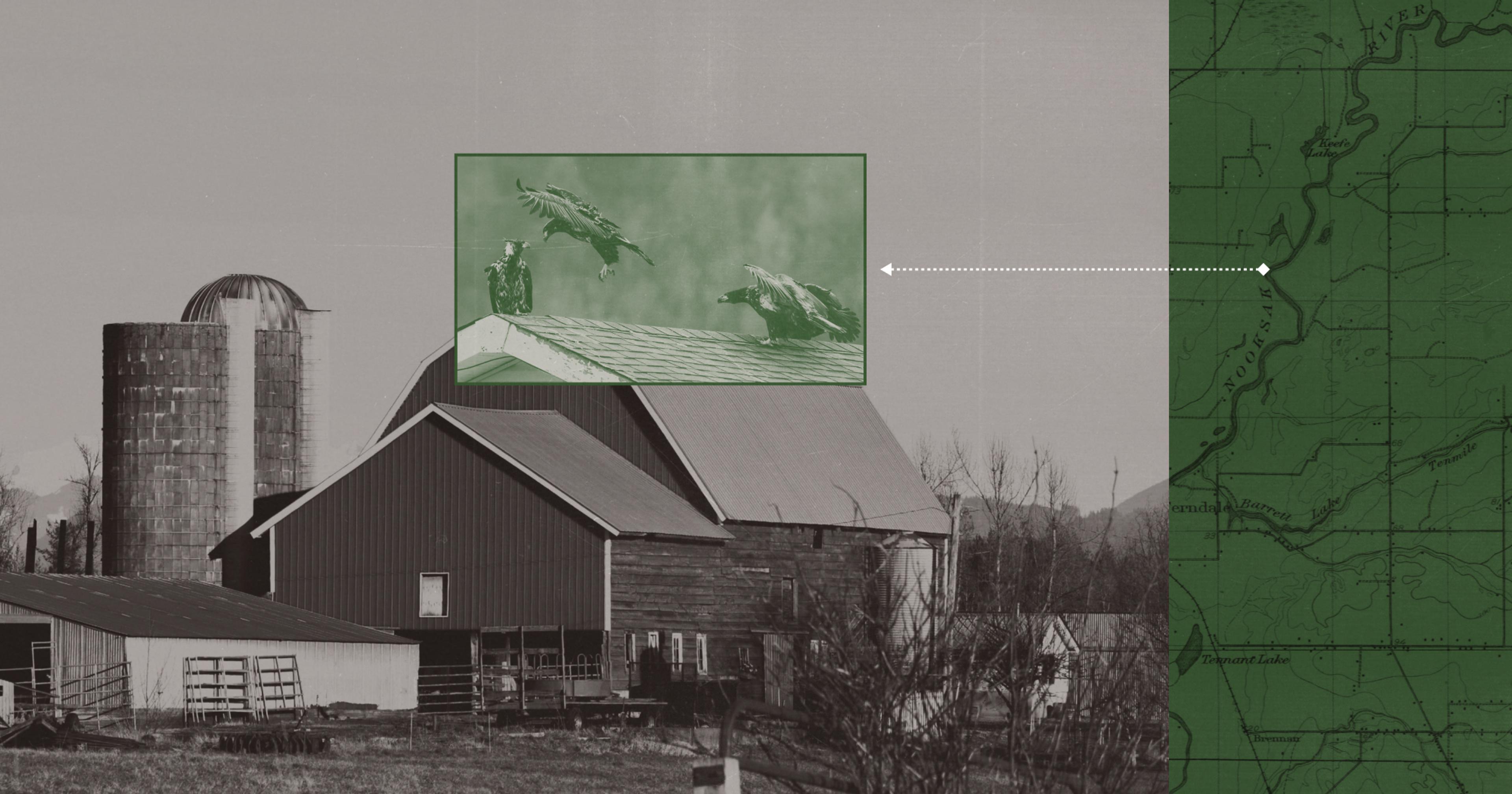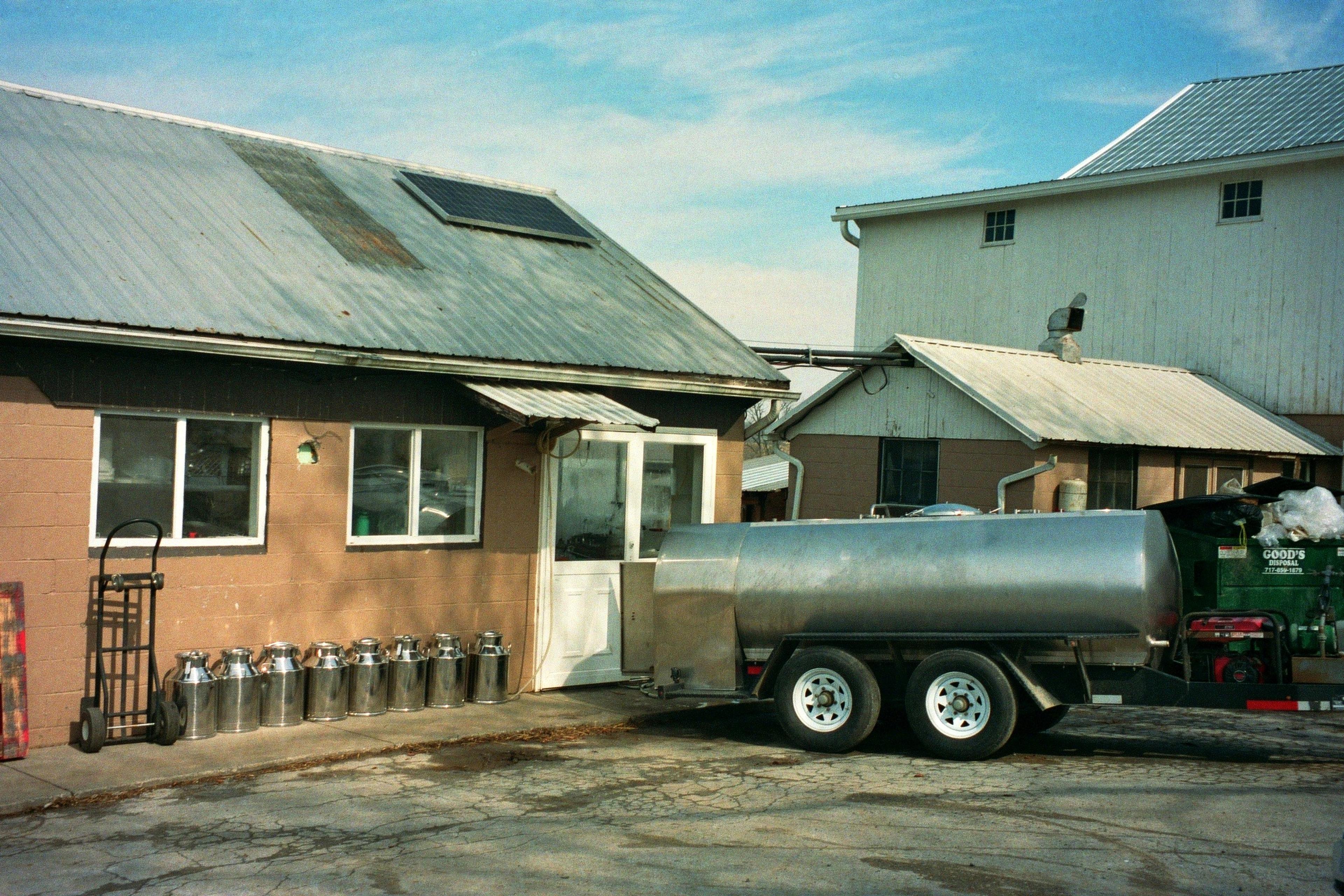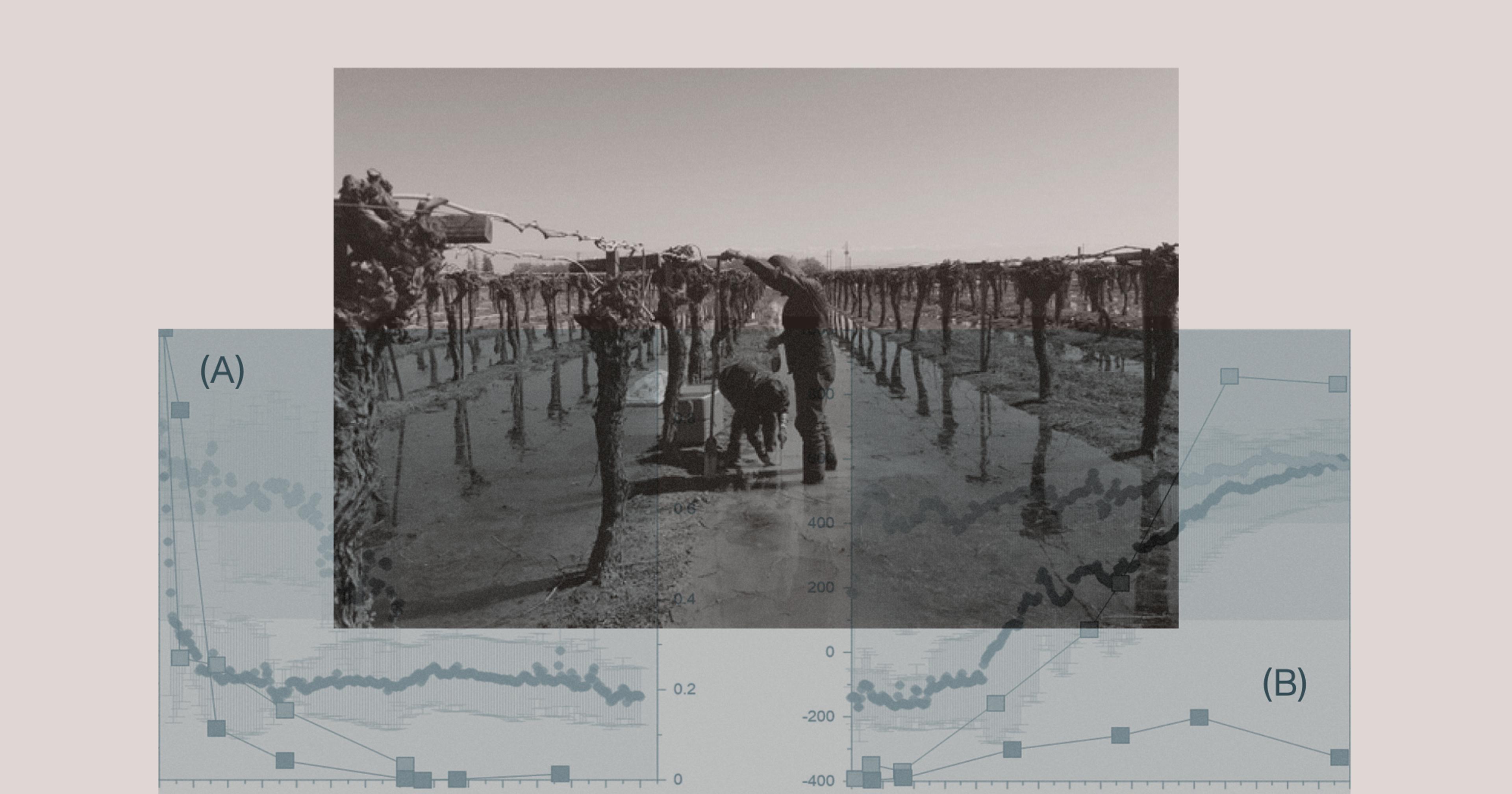A new study shows that bald eagles have landed on Northwest Washington dairy farms to feed on placenta and calf carcasses. It’s a symbiotic relationship.
When Ethan Duvall heard that hundreds of bald eagles flocked to the rivers of northwestern Washington to feast on the salmon spawning in the water, he wanted to see it for himself.
A Washington native and doctoral student in ecology and evolutionary biology at Cornell University, Duvall explained that, historically, bald eagles have relied on salmon runs in these rivers as an abundant winter food source. However, thanks to climate-induced shifts, salmon now tend to run up the river and spawn earlier in the year, disrupting the birds’ seasonal food supply. The eagles that fly to the region for food were forced to look elsewhere, and Duvall wanted to know where that was.
“We found them on the farms,” he said.
In a new study published in Ecosphere, Duvall teamed with researchers from the University of Washington and Trinity Western University and discovered that the eagles have found a food source on the region’s abundant dairy farms. “We learned that the bald eagles are so abundant on these dairy farms because they’re able to feed on the byproducts of the dairy industry, which are the placenta of the birthing cows as well as the carcasses of the dairy cows,” Duvall said.
For the farmers, the birds act as free waste collectors, clearing the birth byproducts and ridding farms of carcasses that dairy farmers sometimes have to dispose of after stillbirths or other deaths — creating something of a symbiotic relationship between bird and farmer.
Some Washington farmers now leave carcasses — which normally can cost up to hundreds of dollars for commercial removal — or birth byproducts in their fields, using the eagles‘ presence to deter seasonal waterfowl like geese, swans, and other creatures that can destroy cover crops and increase soil erosion and runoff into streams. Some reported they purposefully placed placenta near feed piles or berry crop acreage, mitigating the number of pests like starlings.
For their research, the team held face-to-face interviews with 20 of the 78 dairy farms in Whatcom County — where the team focused their study — each of which reported that bald eagles were frequent visitors. Bald eagles are so prominent in the area that every farmer reported the birds on their property — 70% said the eagles’ presence was year-round.

An eagle feasts on a cow's remains.
·Photo by Nick Balachanoff
Normally in the summertime, explained Duvall, most eagles would migrate from the area, leaving only a small number of breeding birds that established territories. But here, they are present in higher numbers all year, and none of the farmers reported any problem with them.
“There seemed to be no conflict between eagles and the dairy farmers. And that was something that has contradicted a lot of other media on eagles and farmers in other types of agricultural settings,” said Duvall.
The region is rich with both salmon-spawning rivers and dairies — Whatcom County and Washington state being some of the largest dairy-producing areas in the Pacific Northwest. Yet it is virtually void of agricultural operations like poultry farms, making the area uniquely positioned to benefit from the eagles.
Unlike conflict between the wild birds of prey and other farming operations — like poultry farmers that lose their flocks to birds of prey — researchers found that when it comes to dairies, not a single farmer they spoke to saw the bald eagles as a nuisance, or wanted them off their land.
At Karen Steensma’s small Whatcom County dairy, milking around 200 cows, you can almost always find an eagle perched on the property’s oldest tree — a towering Sitka Spruce — year-round. The family pastures their cows, which means they have calves born outside often, especially in the warmer months. It’s a food source the eagles fully appreciate.
The birds, however, are not new at Steensma’s dairy farm, which she has operated with her husband for around 40 years. Steensma said the birds have been around for years, but have been growing in numbers over the decades, thanks partially to conservation efforts.

A bald eagle surveys the farm.
·Photo by Nick Balachanoff
On their property, she watched the population of eagles grow alongside her family. “When my kids were still in school, they woke up to eagles chirping outside their windows,” said Steensma, who is also a professor of biology at Trinity Western University and assisted Duvall and his team with the study.
In the dairy-dominated area, the bald eagles have found plenty to feast on when the salmon is scarce. Depending on the size of a dairy farm, calf births can happen on a daily basis, meaning there is an ample supply of placenta. Steensma recently looked out her window to see six eagles flock to the placenta almost immediately after a calf’s birth. “Eagles are really opportunists, and they’re scavengers,” she said.
Calves and cattle are too big for eagles to pose any major issue, but 10% of the farmers mentioned eagles preying on domestic poultry. Steensma said she has lost a few of the domestic ducks she keeps on the property to eat the slugs out of her garden, but they learn quickly to avoid the raptors. “The ducks are mostly smart, and run and hide if they hear or see an eagle flying overhead,” she said.
Ultimately, she still welcomes the eagle’s presence, as do all the other Washington farmers asked as part of the research. To her, there is no reason why her dairy farmland can’t also provide for wildlife.
“Farmland is providing incredible habitat, even though it’s being farmed, it’s working ground, but it has all these edges,” said Steensma. “There’s a lot of habitat. The grass provides habitat for voles, which feed the eagles and hawks and it becomes a nice agro-ecosystem.”










